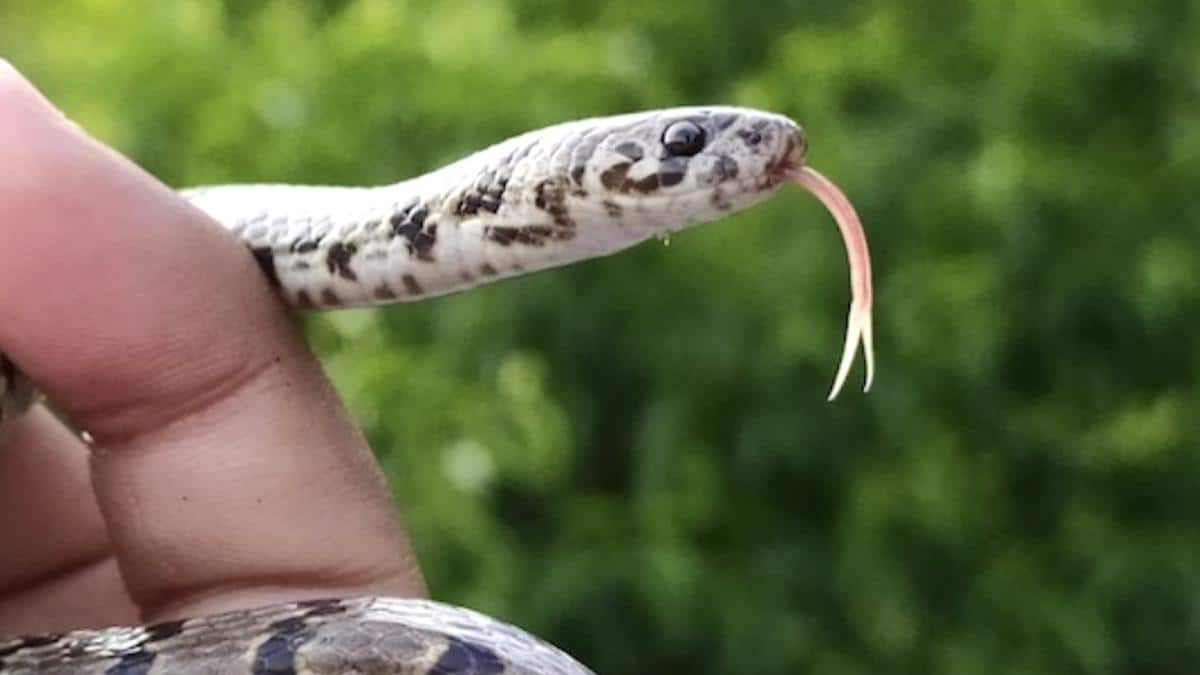

The snake Virendar Bhardwaj photographed and uploaded to Instagram. Virendar Bhardwaj
Virendar Bhardwaj, a graduate student at Guru Nanak Dev University in Amritsar, India, spent the COVID-19 lockdowns much like anyone else — on Instagram. He explored his backyard, ‘gramming the bugs, frogs, and reptiles that he found along the way.
But on June 5, 2020, he uploaded a photo that would surprise scientists. His casual posting actually led to the discovery of a new species.
Bhardwaj posted a photo of a snake that caught the attention of Zeeshan A. Mirza, a herpetologist (someone who specializes in studying reptiles and amphibians) at India’s National Centre for Biological Sciences.
The social media caption labeled this snake as a kukri, which are known as a common group of snakes found in the region. The group is named after the snakes’ curved fangs that resemble Nepali daggers, called kukris. But Mirza noticed that this particular snake looked different from most kukri.
Mirza and Harshil Patel of Veer Narmad South Gujarat University reached out to Bhardwaj, who was able to find two of these snakes for the researchers to study. In early 2021, the team finished the identification process after pandemic-related delays and confirmed that this snake was a previously unidentified species.
“Lack of pterygoid and palatine teeth of the new species suggests that the diet may largely comprise of eggs,” the researchers noted. “Discovery of the new species is not surprising, as the Western Himalayas has been poorly explored in terms of its herpetofaunal diversity.”
They named the species Oligodon churahensis after Churah Valley, where Bhardwaj found the species and published the findings in Evolutionary Systematics. Notably, in the acknowledgements section of the research, the team said, “The discovery of the species would not have been possible without Instagram (Facebook, Inc.) where the first author (ZAM) came across image of the new species.”
The authors hope the discovery leads to further exploration in the Western Himalayas, which are often overlooked by researchers compared to the Eastern Himalayas. But the team also encourages everyone to start exploring closer to home to see what they might find.
“It is quite interesting to note that how an image from Instagram led to the discovery of such a pretty snake that was unknown to the world,” Mirza told Mongabay. “Exploration of your own backyard may yield species that are perhaps undocumented. Lately, people want to travel to remote biodiversity hotspots to find new or rare species, but if one looks at their own backyard, one may end up finding a new species right there.”

 233k
233k  41k
41k  Subscribe
Subscribe 